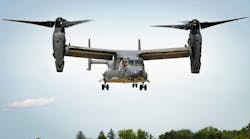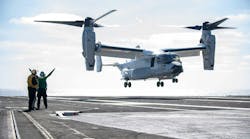It’s said that a helicopter is a collection of rotating parts going round and round and reciprocating parts going up and down -- all of them trying to become random in motion. “The civil helicopter market isn’t unlike that,” according to aviation analyst Brian Foley, “with some parts already shaking loose.”
The General Aviation Manufacturers Association (GAMA) reported that civil helicopter unit deliveries were down 25% year-over-year, with a combined value down 8%. Even the number of used equipment transactions were down 5.7% in 2014 versus 2013 according to data provider AMSTAT. “And that was before the relatively recent one-two punch of lower oil prices and a stronger US Dollar which could further soften the market.”
Priced in US Dollars which has seen its value soar against other currencies, choppers appear an average of 20% pricier in markets outside the US than a year ago. That’s coupled with lower oil prices which act as a two-edged sword; helping the budget-conscious small helicopter market but hitting the big-ticket offshore oil and gas segment that accounts for a significant portion of the industry’s overall value. This is the much larger concern.
Oil companies’ capital budgets are lower this year as they seek to conserve cash in the face of market uncertainty. There will be a corresponding decline in the utilization of offshore helicopter fleets used to transport their workers to rigs, and a subsequent drop in demand for new ones. “It will be a domino effect. Once demand drops to fly oil crews to offshore platforms operators will reassess their fleet requirements which in turn cause lessors and manufacturers to manage their order books for deferrals and cancellations.”
The order books won’t decline overnight, but will do so gradually as deliveries near and progress payments come due over the coming months. It won’t be until that time the customer will decide whether to take, defer or outright cancel the order.
Operational leases have gained in popularity with offshore users allowing them to delay payments until after the helicopter has been delivered and is producing revenue. A number of well-capitalized lessors sprung up to meet the demand of this low-hanging fruit. Offshore helicopters are the most expensive the industry has to offer, and leasing one is a lot simpler than having to lease many smaller ones to make the same profit.
A problematic aspect of any slowdown in this sector would be in the pre-owned market. This equipment is often specialized and can be difficult to repurpose for another role other than oil and gas transportation. Since most offshore operators would presumably be feeling the pinch, there would be more sellers than buyers putting downward pressure on used pricing and residual values
Fortunately there are other segments that do better in a low oil price environment although they don’t contribute as much delivery value as the big offshore machines. Buyers of small piston and single turbine helicopters such as law enforcement, newsgathering and private individuals tend to be very cost-conscious. Thus any reduction in their cost of operation, of which fuel is a meaningful component, is viewed as a positive. This, coupled with municipalities having improved tax revenue bases will have a positive effect, although demand could be somewhat offset by a slew of cheap military surplus machines on the market. The US corporate sector will presumably be in a better buying mood by virtue of higher stock prices and stronger balance sheets.
2015 will be a volatile, challenging market for the civil helicopter industry with consolidation a possibility across all aspects of the business.




